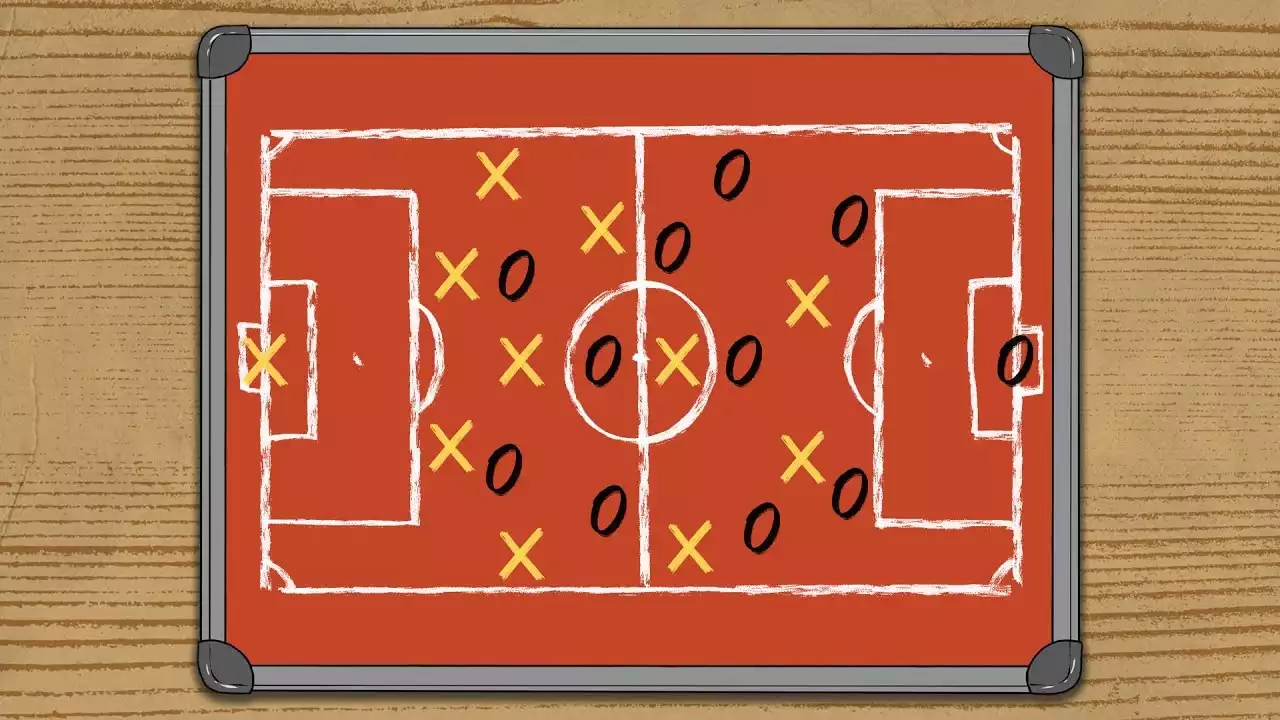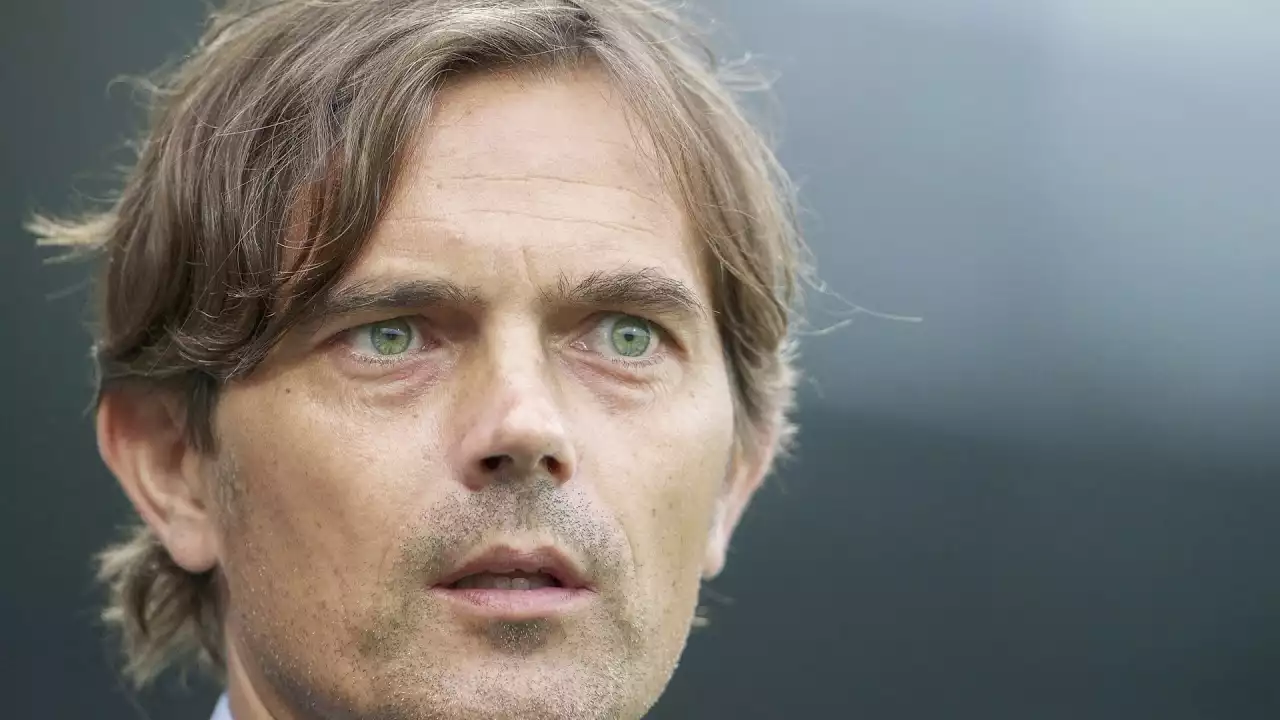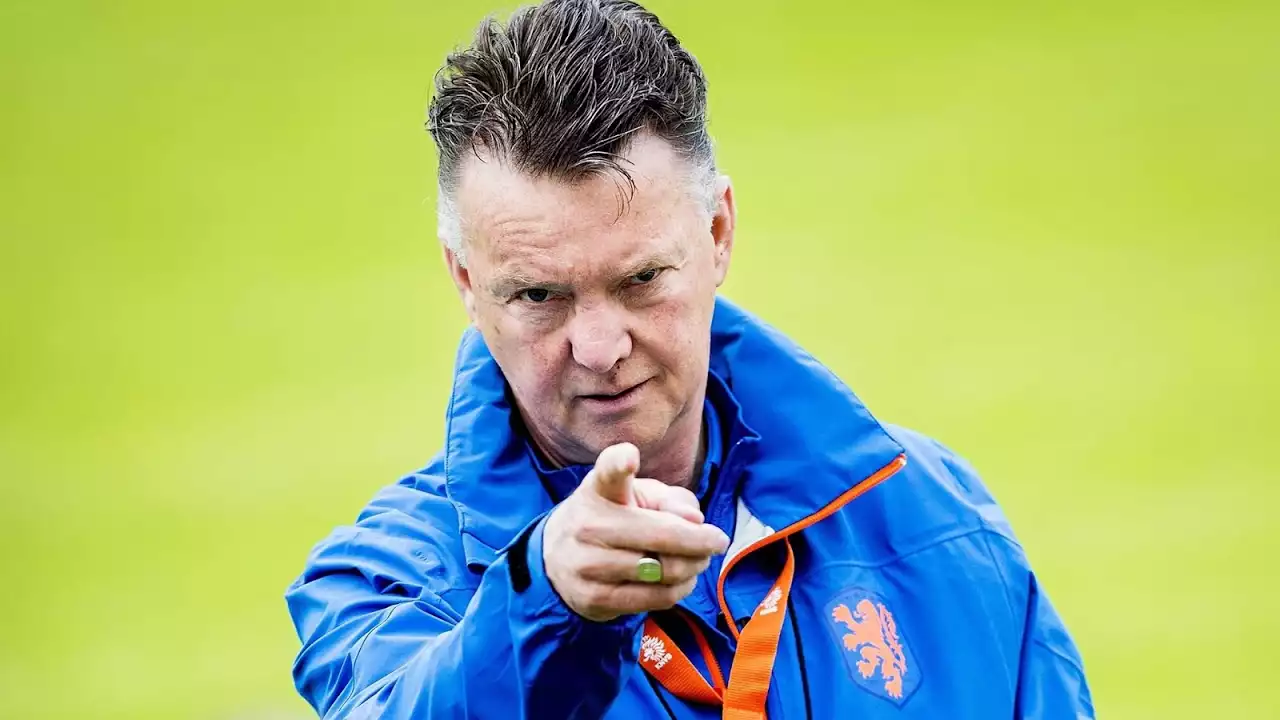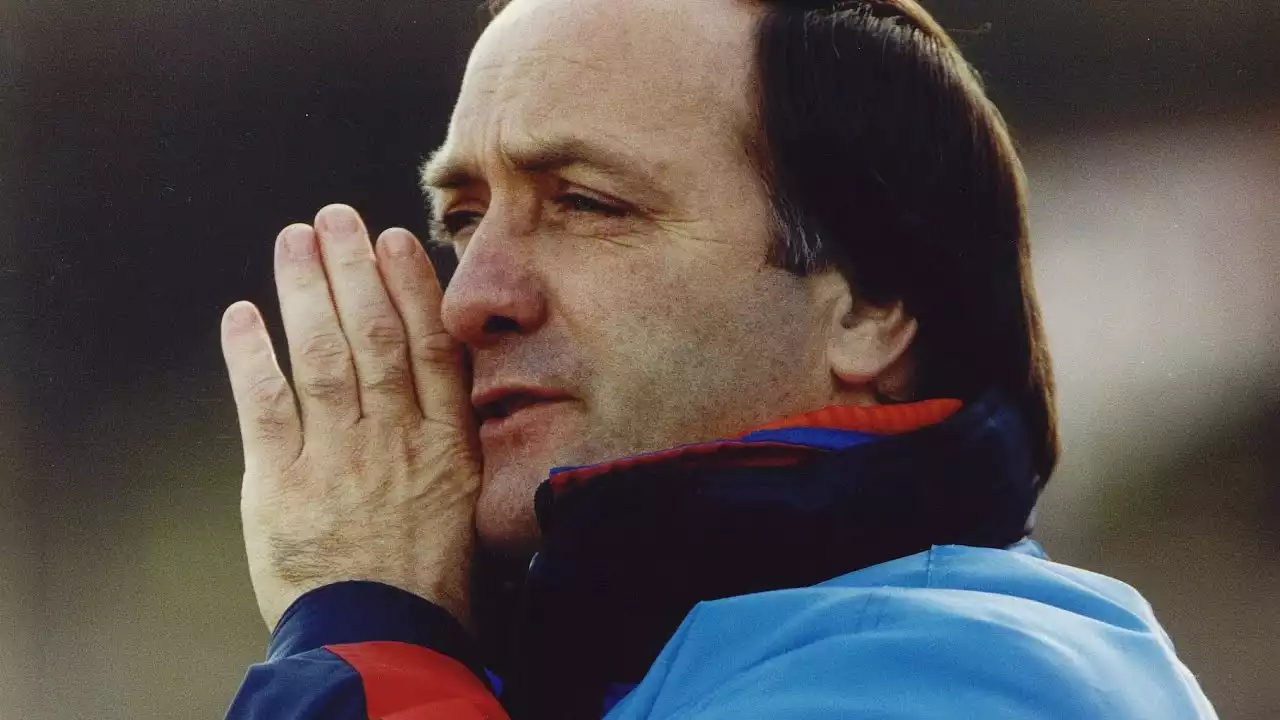The Importance of Tactical Trends in Football Management
Football is a constantly evolving sport, and tactical trends play a crucial role in the success of teams. In the Eredivisie, the Dutch football league known for its technical prowess and attacking style, managers are always looking for innovative strategies to gain an edge over their opponents. Tactical trends not only shape the way teams play but also influence the development of players and the overall direction of the league. In this section, we explore why tactical trends are so important in Eredivisie management.
One of the key reasons why tactical trends matter is that they allow teams to adapt to the changing dynamics of the game. Football is a game of constant movement and unpredictability, and managers need to stay ahead of the curve to succeed. By analyzing and implementing the latest tactical trends, managers can ensure that their teams are well-prepared for the challenges they face on the pitch. Whether it's a shift towards a more possession-based style or a focus on high-pressing, tactical trends provide teams with the tools they need to compete at the highest level.
Another reason why tactical trends are important is that they can give teams a competitive advantage. In a league as competitive as the Eredivisie, every small advantage can make a big difference. By adopting innovative strategies and tactics, teams can surprise their opponents and gain an edge in crucial moments of the game. Whether it's a tactical switch during a match or a long-term strategic approach, managers who stay up-to-date with the latest trends are more likely to achieve success.
Lastly, tactical trends also have an impact on player development. As managers experiment with new tactics and formations, players are often required to adapt and learn new skills. This constant evolution helps players grow and become more versatile, which ultimately benefits both the individual and the team. By embracing tactical trends, managers can create an environment that fosters player development and allows their teams to reach their full potential.
Analyzing Different Approaches to Eredivisie Management
In this section, we delve into the various tactical approaches employed by managers in the Eredivisie. From high-pressing to possession-based football, each approach has its own unique advantages and challenges. By analyzing these different approaches, we can gain a deeper understanding of the tactical trends that have defined the Eredivisie in recent years.
One of the most popular tactics in the Eredivisie is high-pressing. This strategy involves putting pressure on the opposition when they have the ball, often in their own half. By doing so, teams aim to win the ball back quickly and create scoring opportunities. High-pressing requires a high level of fitness and coordination, as players need to work together to close down spaces and force turnovers. This approach has been successful for many teams in the Eredivisie, as it allows them to control the tempo of the game and disrupt their opponents' build-up play.
Another common approach in the Eredivisie is possession-based football. This style of play focuses on retaining the ball and building attacks patiently. Teams that employ this tactic prioritize ball circulation and are often characterized by their technical ability and composure in possession. By dominating possession, teams can dictate the pace of the game and create scoring opportunities. However, possession-based football also requires discipline and patience, as teams need to be careful not to lose the ball in dangerous areas.
In addition to high-pressing and possession-based football, some teams in the Eredivisie opt for a more direct style of play. This approach involves playing long balls and utilizing the physicality of the players to create goal-scoring opportunities. Direct football can be effective against teams that struggle with aerial duels and physicality, as it allows teams to bypass the opposition's midfield and defense. However, it also requires players who are capable of winning headers and holding up play, as well as accurate long-range passers.
While these are just a few examples, the Eredivisie is a league known for its tactical diversity. Managers in the Eredivisie continue to explore new approaches and experiment with different tactics, leading to an exciting and dynamic footballing landscape.
The Role of Data Analysis in Tactical Decision Making
In recent years, data analysis has become an integral part of tactical decision making in football. With the advent of advanced statistics and analytics tools, managers in the Eredivisie now have access to a wealth of information that can help inform their tactical strategies. In this section, we explore the role of data analysis in Eredivisie management and how it has revolutionized the way teams approach the game.
Data analysis provides managers with valuable insights into team and player performance. By analyzing data from matches, training sessions, and individual player statistics, managers can identify patterns and trends that can inform their tactical decisions. For example, data analysis can reveal which areas of the pitch a team is most vulnerable in, allowing managers to devise strategies to exploit those weaknesses. It can also help identify players who excel in certain areas, allowing managers to optimize their lineups and substitutions.
In addition to match data, data analysis can also provide insights into player fitness and injury prevention. By monitoring player workload and analyzing data such as distance covered, sprinting speed, and heart rate, managers can make informed decisions about player rotation and recovery. This helps reduce the risk of injuries and ensures that players are in peak condition for matches.
Furthermore, data analysis can also assist in scouting and recruitment. By analyzing data from multiple sources, managers can identify talented players who may have gone under the radar. This allows teams with limited resources to find hidden gems and build competitive squads. Additionally, data analysis can help identify players who are a good fit for a team's tactical system, ensuring a better alignment between the players' skills and the team's playing style.
Overall, data analysis has become an indispensable tool for managers in the Eredivisie. By leveraging the power of data, managers can make more informed tactical decisions, optimize player performance, and gain a competitive edge over their opponents.
The Impact of Modern Technology on Tactical Strategies
Modern technology has had a profound impact on tactical strategies in the Eredivisie. From advanced video analysis software to wearable tracking devices, technology has revolutionized the way teams prepare for matches and analyze their performance. In this section, we explore the various ways in which technology has shaped tactical strategies in the Eredivisie.
One of the most significant advancements in technology is video analysis software. Coaches and analysts can now use sophisticated software to break down and analyze every aspect of a match. By studying footage from matches, teams can gain insights into their opponents' tactical setups, individual player tendencies, and weaknesses. This allows managers to devise strategies that exploit these vulnerabilities and nullify their opponents' strengths. Video analysis software also enables teams to review their own performances and identify areas for improvement.
Wearable tracking devices, such as GPS trackers and heart rate monitors, have also become increasingly popular in the Eredivisie. These devices provide real-time data on player performance, allowing managers to monitor key metrics such as distance covered, sprinting speed, and heart rate. This data can help managers make informed decisions about player substitutions, identify fatigue levels, and optimize player workload. By leveraging this data, managers can ensure that their players are performing at their best and reduce the risk of injuries.
Another area where technology has made a significant impact is in communication and collaboration. With the rise of digital platforms and video conferencing tools, teams can now easily share information and coordinate their tactical strategies. Coaches can communicate with players remotely, share video clips and analysis, and provide real-time feedback during matches. This seamless communication allows teams to make tactical adjustments on the fly and ensure that everyone is on the same page.
In conclusion, the impact of modern technology on tactical strategies in the Eredivisie cannot be overstated. From video analysis software to wearable tracking devices, technology has provided managers with powerful tools to analyze and optimize their tactical approaches. As technology continues to advance, we can expect even more innovative solutions to shape the future of tactics in the Eredivisie.
Case Studies of Successful Tactical Trends in Eredivisie
In this section, we examine some notable case studies of successful tactical trends in the Eredivisie. These examples highlight the impact of innovative strategies and provide insights into how they were implemented and executed by managers and teams.
One such case study is the rise of the high-pressing game. Over the past decade, several teams in the Eredivisie have adopted a high-pressing approach, which involves putting intense pressure on the opposition to win the ball back quickly. One team that successfully implemented this tactic is Ajax, who under the guidance of manager Erik ten Hag, have become known for their aggressive pressing and quick transitions. This approach has allowed Ajax to dominate possession, create scoring opportunities, and win multiple Eredivisie titles.
Another notable case study is the success of possession-based football. Teams like PSV Eindhoven and AZ Alkmaar have embraced this tactic, focusing on ball circulation and patient build-up play. PSV Eindhoven, under the management of Roger Schmidt, have adopted a high-intensity pressing game combined with a possession-oriented approach. This has led to success both domestically and in European competitions. Similarly, AZ Alkmaar, managed by Pascal Jansen, have prioritized ball retention and technical proficiency, resulting in consistent performances and a strong presence in the Eredivisie.
Furthermore, FC Utrecht provides an interesting case study of a team that has successfully employed a more direct style of play. Under the guidance of manager René Hake, FC Utrecht has utilized long balls and physicality to great effect, often catching opponents off guard with their direct approach. This has allowed them to challenge the traditional possession-based teams and achieve notable results in the Eredivisie.
These case studies demonstrate that there is no one-size-fits-all approach to tactical success in the Eredivisie. Managers must adapt their strategies to the strengths and weaknesses of their team and find the best approach to exploit their opponents. By studying these successful case studies, managers can gain valuable insights into the tactical trends that have shaped the Eredivisie and apply them to their own teams.
Key Challenges Faced by Managers in Implementing Tactical Trends
While tactical trends can provide teams with a competitive edge, managers in the Eredivisie also face several challenges in implementing these strategies. In this section, we explore some of the key challenges that managers must navigate when adopting new tactical trends.
One of the challenges faced by managers is the need to balance short-term success with long-term development. While tactical trends may yield immediate results, they may not always align with a team's long-term vision. Managers must carefully consider the impact of tactical changes on player development and ensure that they are building a sustainable and cohesive team. This requires a delicate balance between short-term goals and long-term planning.
Another challenge is the resistance to change from players and staff. Implementing new tactical trends often requires players to adapt their playing style and learn new skills. This can be met with resistance, as players may be comfortable with their current approach or skeptical about the benefits of change. Managers must effectively communicate the rationale behind tactical changes and provide the necessary support and resources to facilitate the transition.
Additionally, the Eredivisie is known for its competitive nature, and teams are constantly looking for ways to gain an advantage. This means that tactical trends can quickly become widespread and lose their effectiveness. Managers must stay ahead of the curve and continuously innovate to maintain their competitive edge. This requires a deep understanding of the game, a willingness to experiment, and the ability to adapt quickly to changing circumstances.
Lastly, financial constraints can also pose a challenge for managers in implementing tactical trends. Some tactical approaches may require specific types of players or additional resources, which may not always be feasible for teams with limited budgets. Managers must find creative solutions and adapt their strategies to the resources available to them. This requires strategic thinking and a focus on maximizing the potential of the squad.
In conclusion, while tactical trends can provide teams with a competitive advantage, managers in the Eredivisie face several challenges in implementing these strategies. By acknowledging and addressing these challenges, managers can increase their chances of success and create a cohesive and effective team.
The Role of Player Development in Tactical Success
Player development plays a critical role in the success of tactical strategies in the Eredivisie. In this section, we explore how player development and tactical success are interconnected and how managers can foster a culture of growth and improvement.
One of the key aspects of player development is identifying and nurturing talent from a young age. The Eredivisie is known for its strong youth academies, which produce talented players who go on to have successful careers. Managers play a crucial role in identifying young players with potential and providing them with the right opportunities and guidance to develop their skills. By investing in youth development, managers can create a pipeline of talented players who can be integrated into their tactical systems.
In addition to youth development, managers also play a crucial role in the ongoing development of players at all levels. This includes providing players with regular feedback, setting goals, and creating a supportive environment for growth. By focusing on individual player development, managers can ensure that their players are continually improving and adapting to the tactical demands of the team. This not only benefits the individual player but also enhances the overall effectiveness of the team's tactical approach.
Furthermore, managers must also consider the importance of teamwork and communication in tactical success. Tactical strategies often require a high level of coordination and understanding between players. Managers must foster a culture of collaboration and open communication, where players feel comfortable expressing their ideas and working together towards a common goal. By creating a strong team dynamic, managers can enhance the effectiveness of their tactical strategies and maximize the potential of their players.
Lastly, managers must also consider the role of psychology in player development. Building confidence and resilience in players is essential for their growth and success. Managers must understand the psychological aspects of player development and create an environment that supports mental well-being. By providing players with the necessary support and resources, managers can help them overcome challenges and reach their full potential.
In conclusion, player development is a crucial component of tactical success in the Eredivisie. Managers must invest in youth development, foster a culture of growth and improvement, promote teamwork and communication, and support the psychological well-being of their players. By prioritizing player development, managers can create a strong foundation for tactical success and ensure the long-term sustainability of their teams.










.png?size=50)